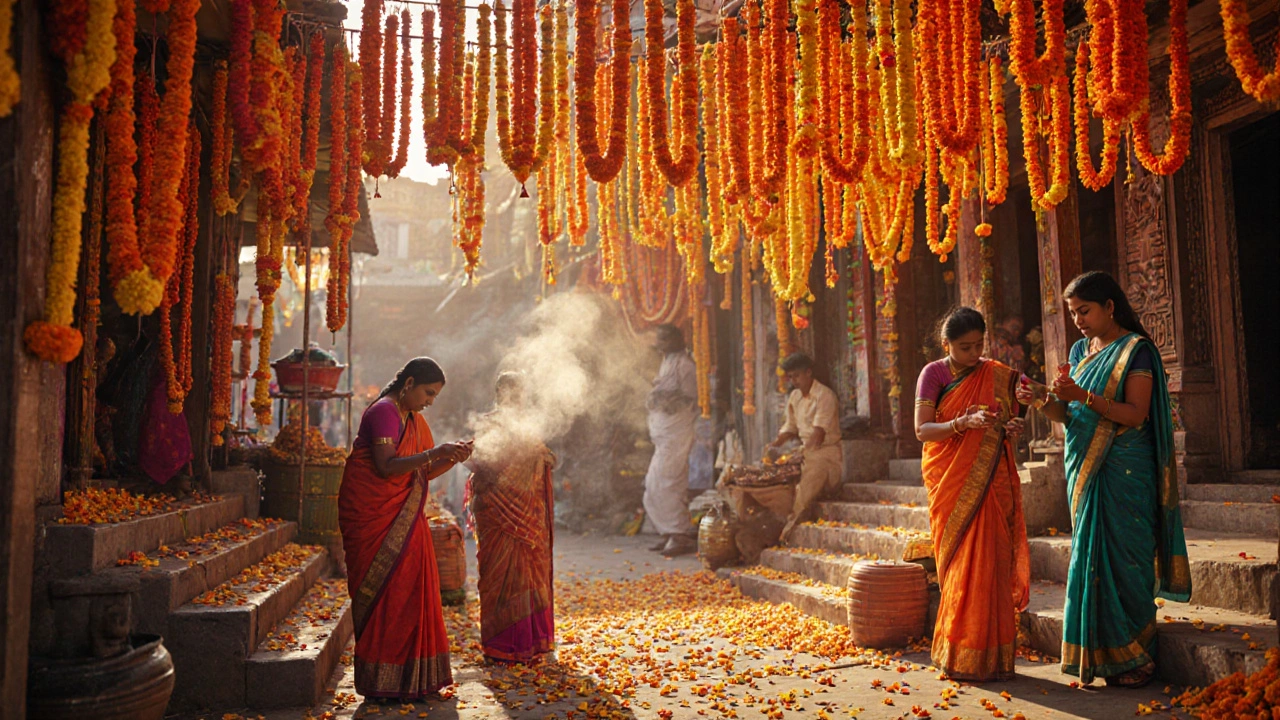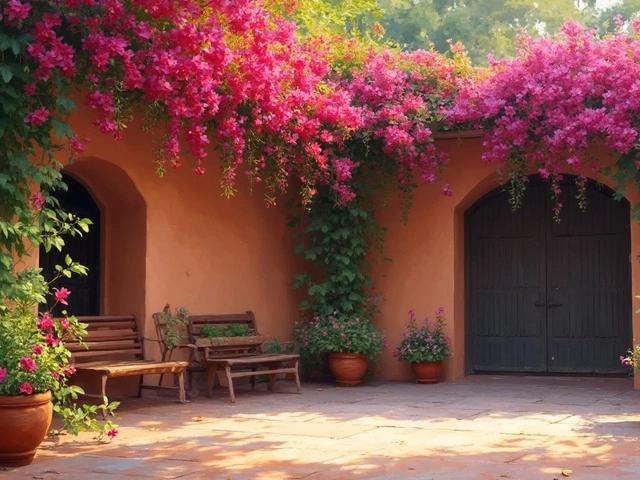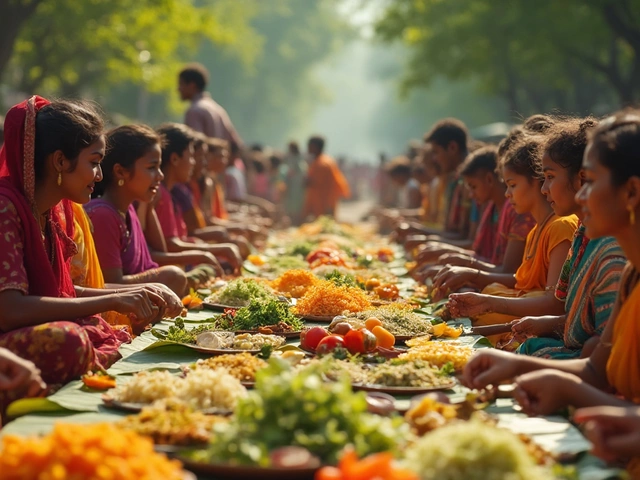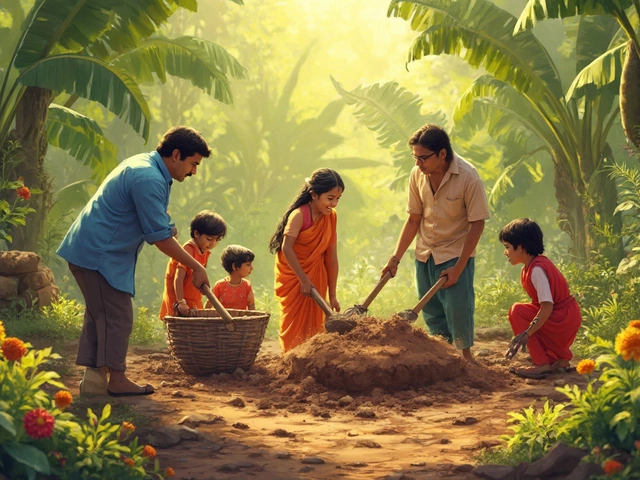Marigold Production Calculator
Marigolds dominate Indian flower production at 1.2M+ metric tons annually—more than all other flowers combined!
During Ganesh Chaturthi in Maharashtra alone, 1,200+ metric tons of marigolds are consumed (over 150 million blooms).
A single acre of marigold yields ₹1.5 lakh ($1,800) per season—more than rice or millet.
Your Marigold Calculation Results
Enter your values and click Calculate to see your results.
If you’ve ever walked through a market in Delhi, driven past a temple in Tamil Nadu, or seen a wedding in Rajasthan, you’ve seen it-bright orange and yellow blooms piled high, strung into garlands, scattered on altars, and lining every street during festivals. It’s not just decorative. It’s everywhere. And it’s not just popular-it’s the most grown flower in India by a massive margin. That flower is the marigold.
Why Marigolds Dominate Indian Gardens
Marigolds aren’t just pretty. They’re practical. They grow fast, survive harsh sun, need little water, and bloom nonstop from spring through late autumn. In rural India, farmers plant marigolds between rows of crops like onions and tomatoes. Why? Because their strong scent keeps pests away. Studies from the Indian Council of Agricultural Research show marigold intercropping reduces nematode infestations by up to 70% in vegetable fields.
But the real reason they’re everywhere? Culture. Marigolds are sacred in Hinduism. They’re offered to gods during puja, used in wedding decorations, and laid on graves. During Diwali, Durga Puja, and Ganesh Chaturthi, temples and homes use millions of marigold garlands. In Maharashtra alone, over 1,200 metric tons of marigolds are consumed during the 10-day Ganesh festival. That’s more than 150 million individual blooms.
Where Marigolds Are Grown in India
Marigold farming isn’t scattered-it’s concentrated. The top three states account for nearly 80% of India’s production:
- Tamil Nadu: Especially around Coimbatore and Madurai. Farmers here grow the African marigold (Tagetes erecta), known for large, dense flowers. Many supply the temple markets in Tirupati and Chennai.
- Karnataka: The districts of Bengaluru Rural and Mysore have thousands of smallholders growing French marigold (Tagetes patula), prized for its compact size and bright color.
- Andhra Pradesh and Telangana: The region around Hyderabad and Nizamabad is the largest producer. Farmers here use drip irrigation and plastic mulch to boost yields, often harvesting three crops a year.
These aren’t backyard gardens. These are commercial operations. In Telangana, some farms cover over 100 acres. They employ hundreds of workers during peak season, mostly women who hand-pluck flowers before sunrise to preserve freshness.
How Marigolds Compare to Other Popular Indian Flowers
India grows many beautiful flowers-jasmine, roses, lotus, chrysanthemums. But none come close in volume.
| Flower | Estimated Annual Production | Primary Use |
|---|---|---|
| Marigold | 1,200,000+ | Religious offerings, festivals, garlands |
| Jasmine | 150,000 | Perfume, hair ornaments, temple offerings |
| Rose | 120,000 | Weddings, cosmetics, export |
| Chrysanthemum | 80,000 | Funerals, decorations |
| Lotus | 15,000 | Religious symbolism, regional festivals |
Even when you add up all the jasmine from Mysore, roses from Kannauj, and chrysanthemums from West Bengal, marigolds still outproduce them combined. The difference isn’t just quantity-it’s consistency. While roses need controlled greenhouses and jasmine requires cool nights, marigolds thrive in open fields, even in temperatures above 40°C.
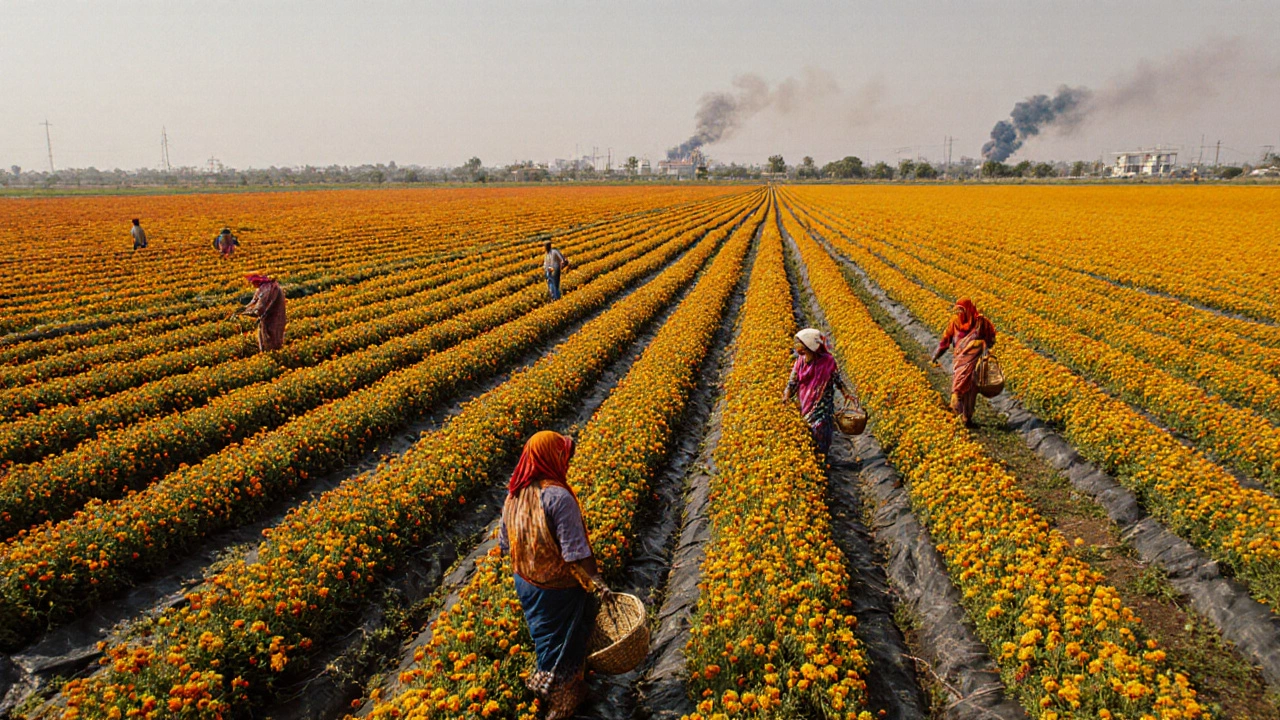
The Economic Impact of Marigold Farming
Marigold farming supports a hidden economy. In rural Andhra, a single farmer can earn ₹1.5 lakh (around $1,800) per acre in a single season-more than what they’d make from rice or millet. Many families rely on marigold harvests to pay for school fees, medical bills, or dowries.
There’s also a thriving informal trade. Women in villages collect discarded blooms from temples and sell them to garland makers. In Varanasi, you’ll find women sitting on sidewalks all day, stringing marigolds into 3-meter-long garlands. Each garland sells for ₹200-₹500, depending on size and quality. A skilled stringer can make 50 garlands a day.
Export is growing too. India now ships dried marigold petals to Europe and the U.S. for natural dyes and cosmetics. Companies like Kama Ayurveda and Forest Essentials use them in face masks and soaps. The global market for marigold-based products is expected to hit $1.2 billion by 2030, with India as the main supplier.
How to Grow Marigolds in India’s Climate
If you’re thinking of planting marigolds at home, you’re in luck-they’re one of the easiest flowers for beginners. Here’s what works:
- Soil: They don’t need rich soil. Sandy loam or even poor garden soil works fine. Drainage is key-don’t plant them where water pools.
- Planting Time: Sow seeds after the monsoon ends, from late September to November. In southern states, you can plant as early as August.
- Spacing: Keep 12-18 inches between plants. Crowding leads to mold and fewer blooms.
- Water: Water deeply once a week. Overwatering kills them faster than drought.
- Light: Full sun. At least 6 hours of direct sunlight daily. They won’t bloom well in shade.
- Harvest: Pick flowers in the morning before the sun gets too hot. Use sharp scissors, not your fingers, to avoid damaging the stem.
They bloom in 45-60 days and keep flowering until frost. No fertilizer needed. No pesticides required. Just sunlight, a little water, and patience.
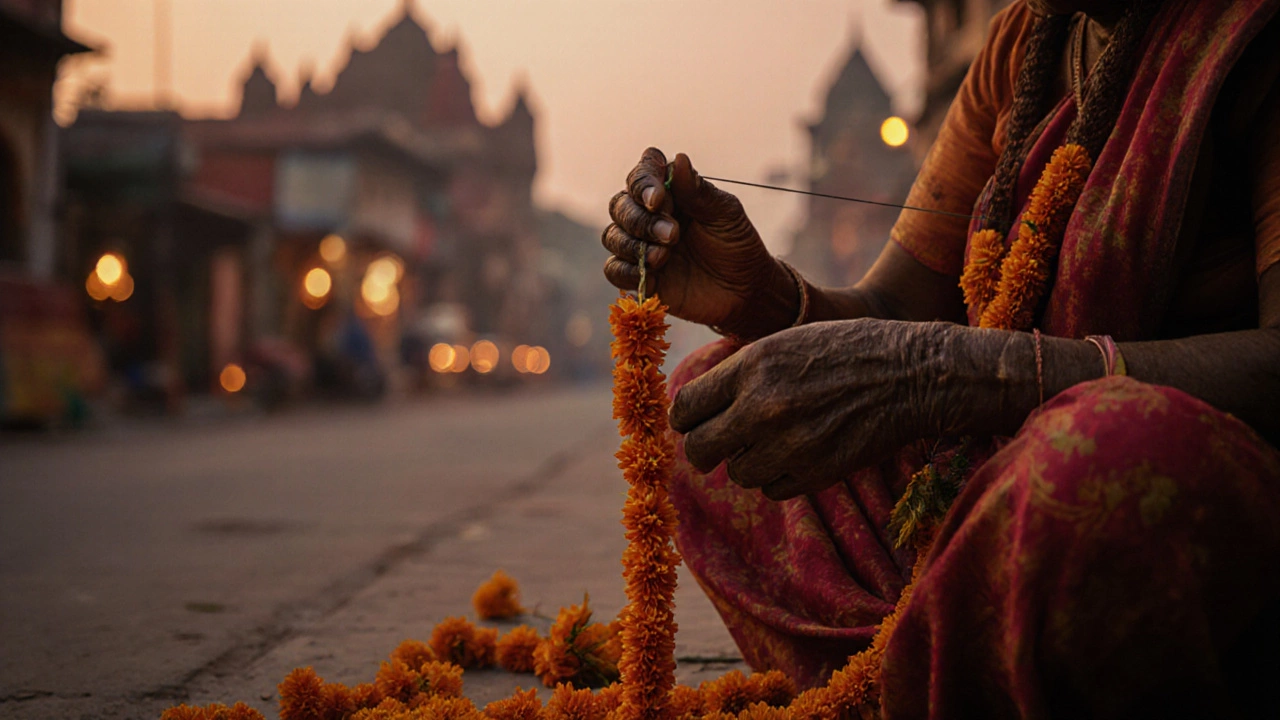
Why Other Flowers Don’t Come Close
Some might think roses or lotuses are more culturally significant. But significance doesn’t equal scale. Roses are expensive to grow. They need fertilizers, pesticides, and climate-controlled conditions. Lotuses require ponds or wetlands. Jasmine blooms only at night and needs cool, humid air.
Marigolds don’t care. They grow on rooftops, in cracks of sidewalks, in pots on balconies, and in fields under blazing sun. They’re the flower of the people-not just the temples. They’re affordable, accessible, and abundant.
Even in urban India, where space is tight, marigolds win. A single packet of seeds costs ₹10. You can grow a dozen plants in a 1-foot-wide balcony box. No one else offers that kind of reach.
What the Future Holds
Marigold farming is evolving. Researchers at the Indian Agricultural Research Institute are developing disease-resistant hybrids with longer vase life. Some farms are now using solar-powered drying units to turn petals into powder for cosmetics. Others are experimenting with organic certification to tap into the global natural products market.
But the heart of marigold culture isn’t changing. It’s still the same hands that pick them at dawn, the same women who string them into garlands, the same temples that light their way with flame and color. As long as India celebrates life, death, and everything in between, marigolds will be there.
They’re not just the most grown flower in India. They’re woven into the rhythm of daily life-quiet, bright, and impossible to ignore.
Is marigold the only flower grown commercially in India?
No, marigold is the most grown, but other flowers like jasmine, roses, chrysanthemums, and tuberose are also farmed commercially. Jasmine is big in Karnataka and Tamil Nadu, roses in Maharashtra and Uttar Pradesh, and chrysanthemums in West Bengal. But none match marigold’s volume or year-round demand.
Can marigolds grow in all parts of India?
Yes. Marigolds are incredibly adaptable. They thrive from the hot plains of Rajasthan to the humid coasts of Kerala. They can handle both dry spells and moderate monsoon rains. The only places they struggle are high-altitude regions like Ladakh or parts of Sikkim, where frost lasts too long.
Why are marigolds used in religious ceremonies?
Marigolds symbolize the sun, life, and devotion in Hinduism. Their bright color represents energy and purity. They’re believed to ward off negative energy and are used to honor deities like Ganesha, Durga, and Lakshmi. Their strong scent is also thought to attract divine presence during rituals.
Do marigolds have any medicinal uses?
Yes. In Ayurveda, marigold petals are used in ointments for skin rashes, burns, and minor wounds. They contain lutein and flavonoids with anti-inflammatory properties. Some modern skincare brands use marigold extracts in creams for sensitive skin.
How long do marigold flowers last after being picked?
When picked at the right time-early morning and kept in cool, shaded water-they last 5 to 7 days. In hot weather, they may fade in 2-3 days. For longer shelf life, florists use chilled storage and misting. For temple use, they’re often strung and used the same day.
